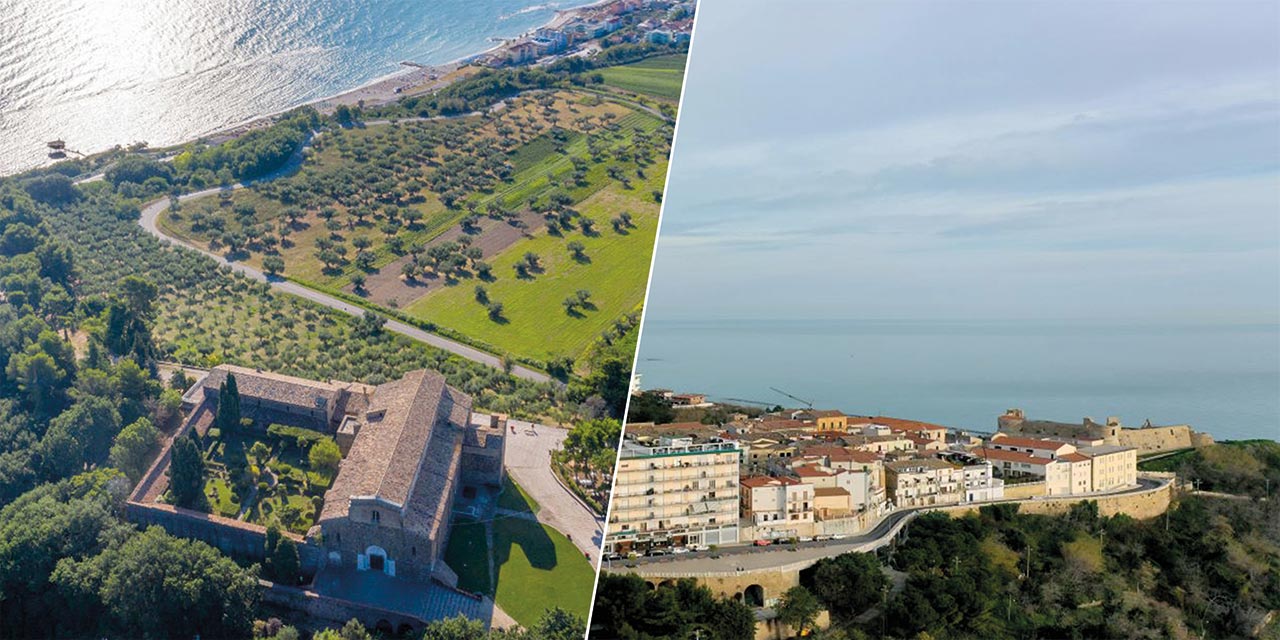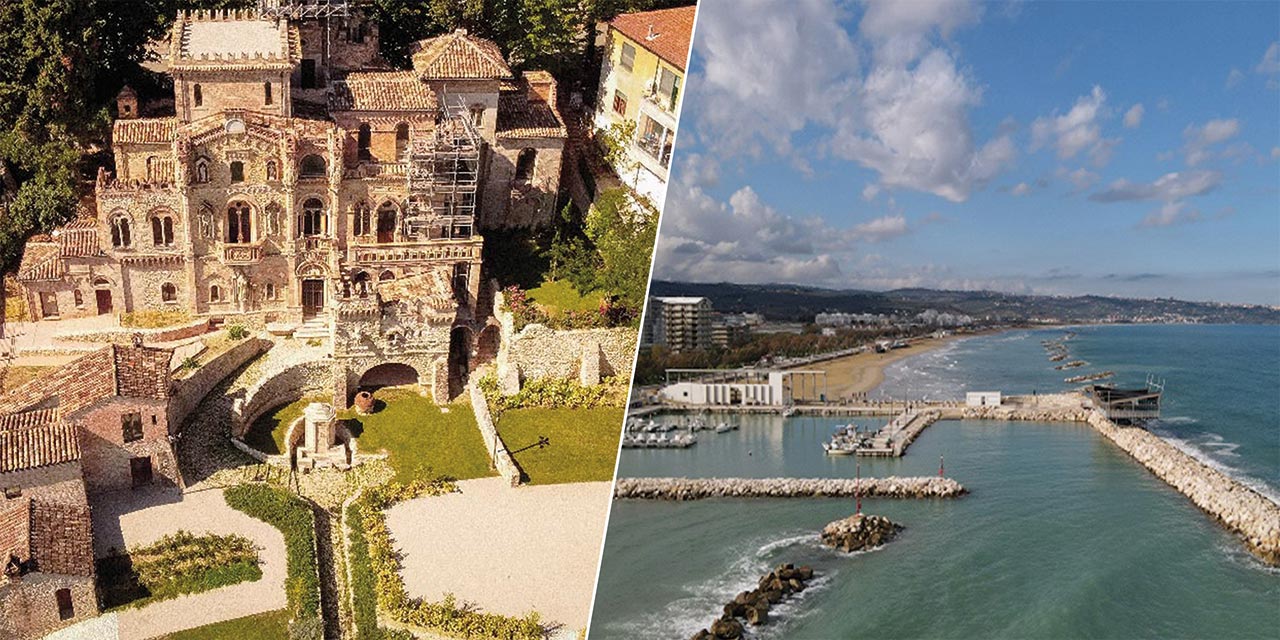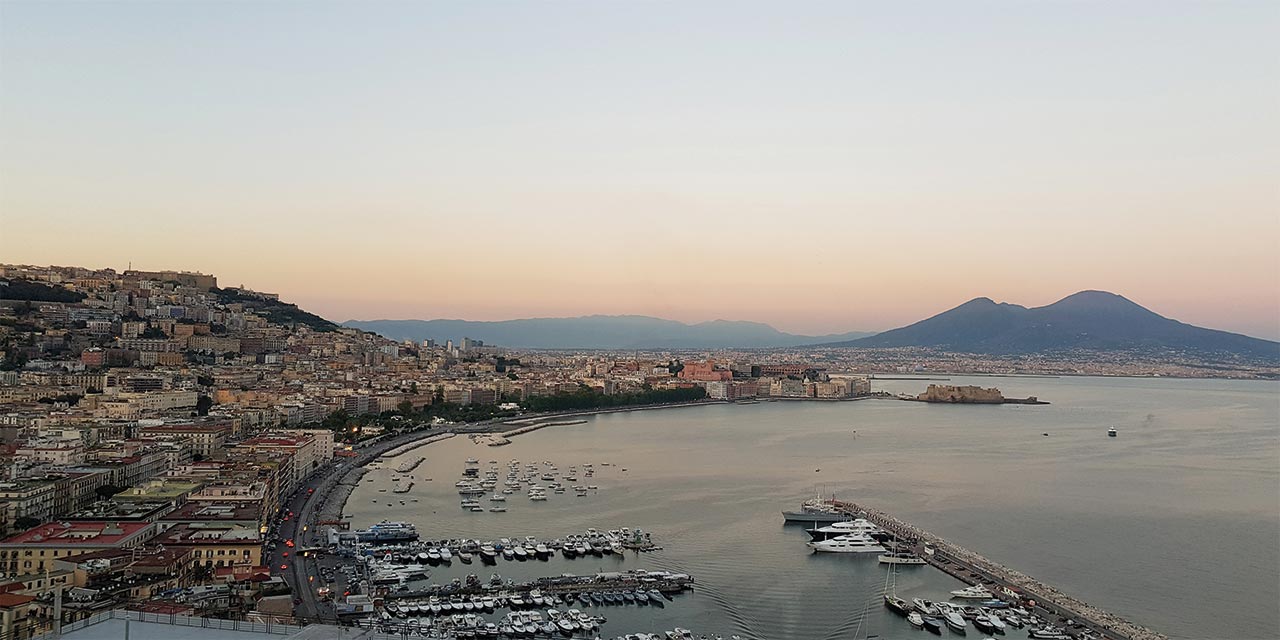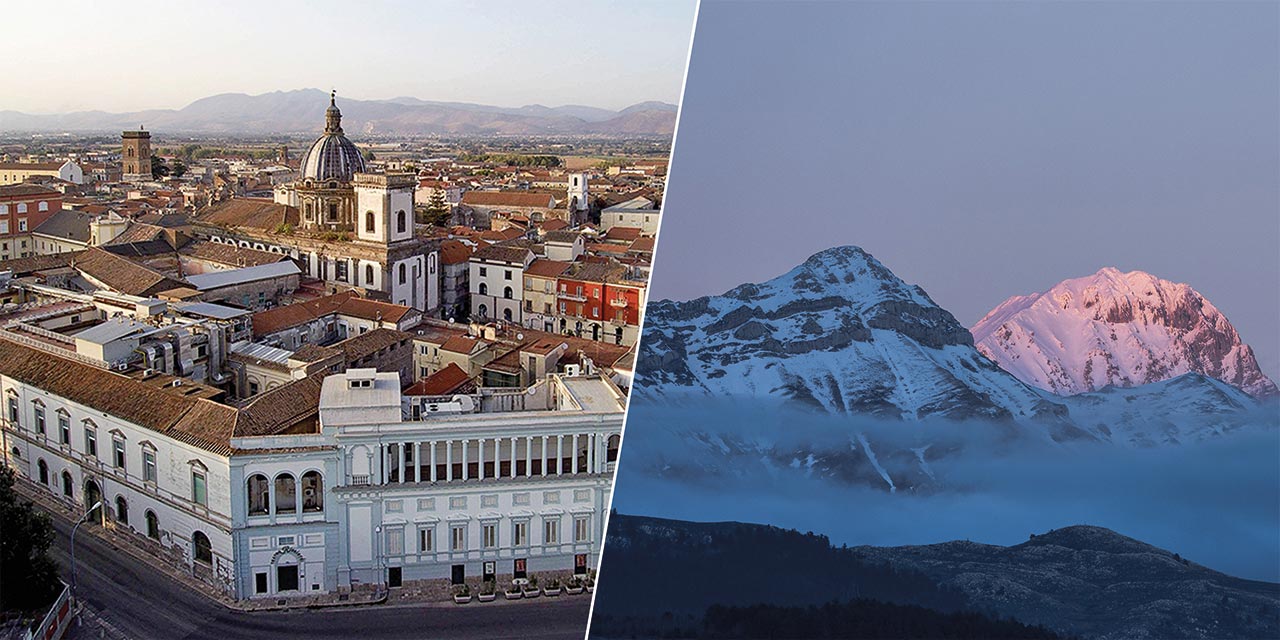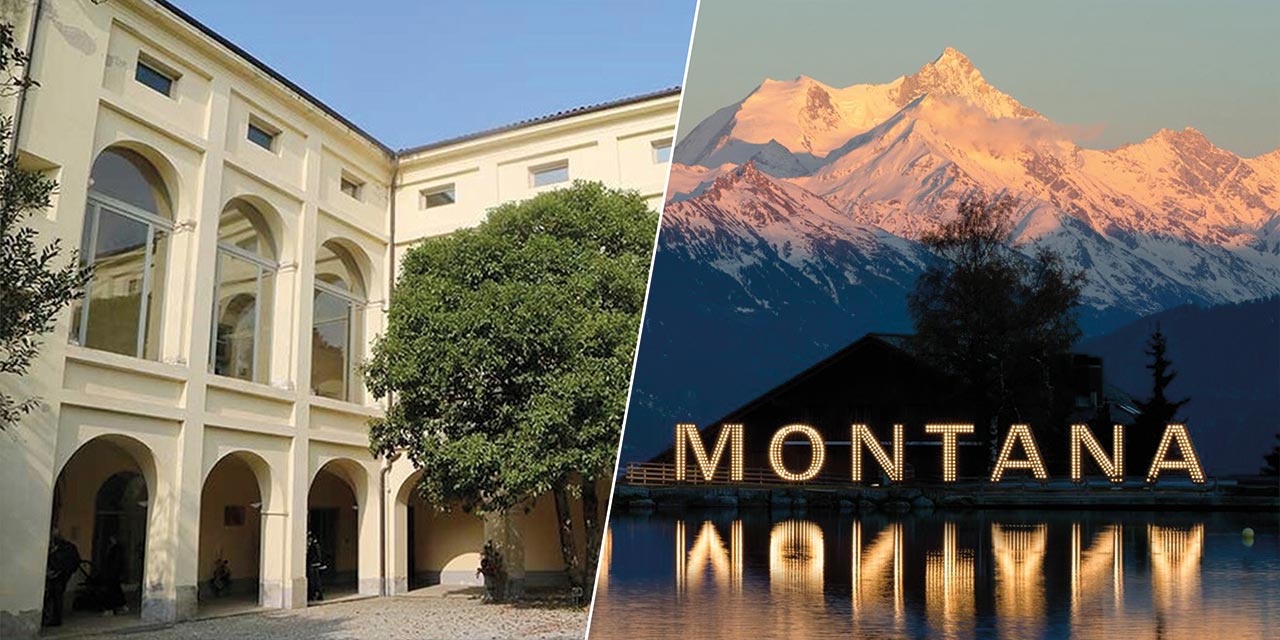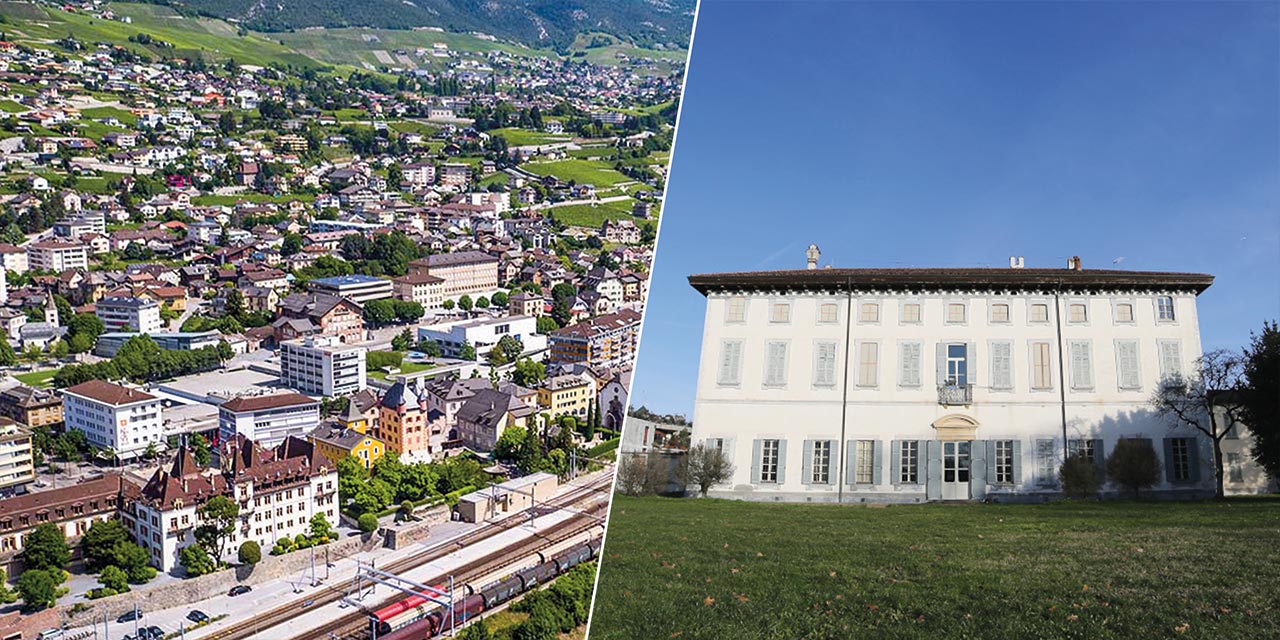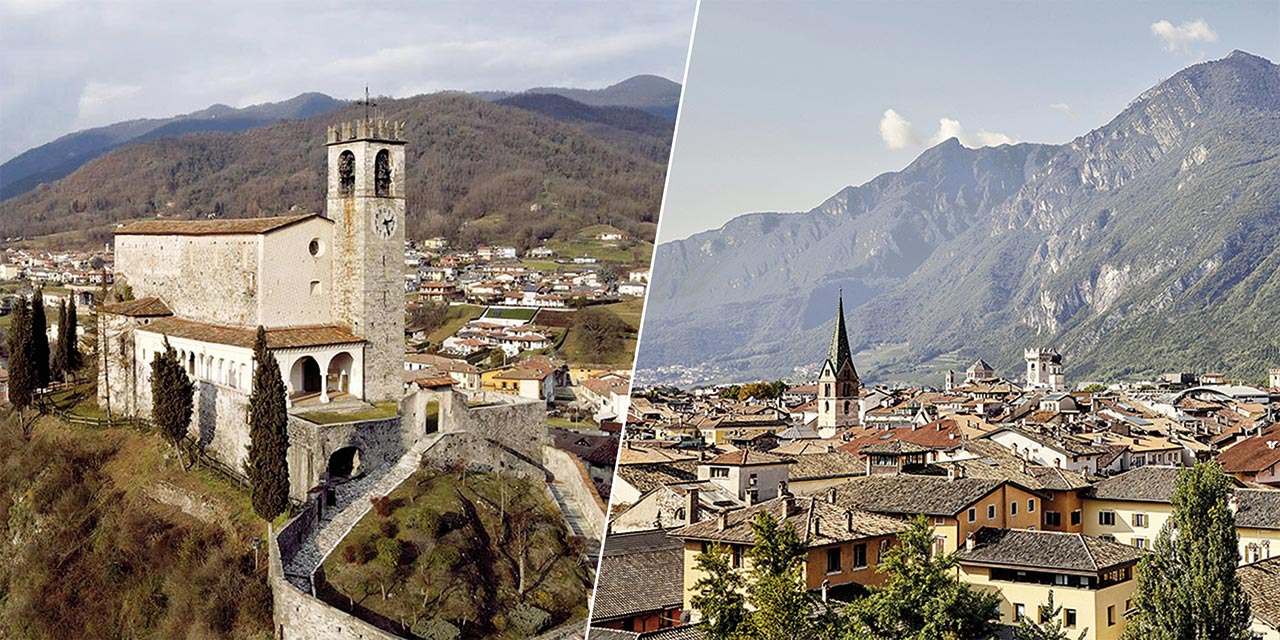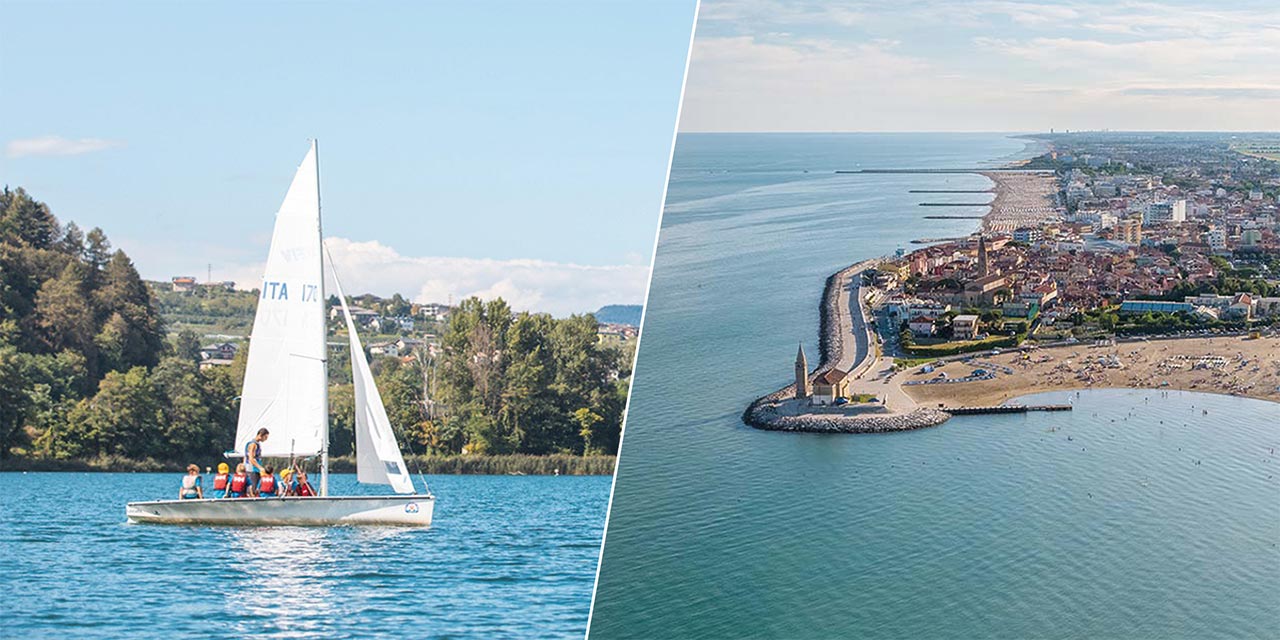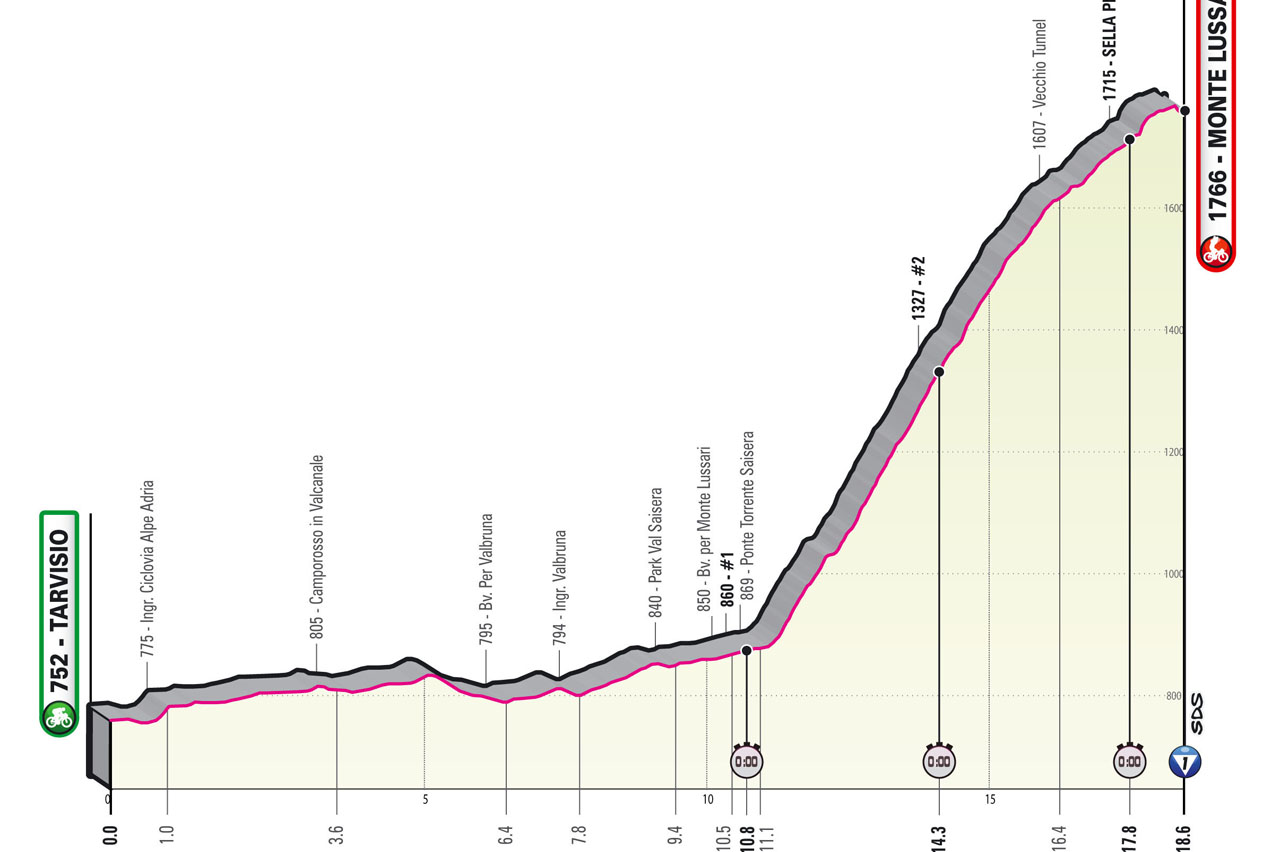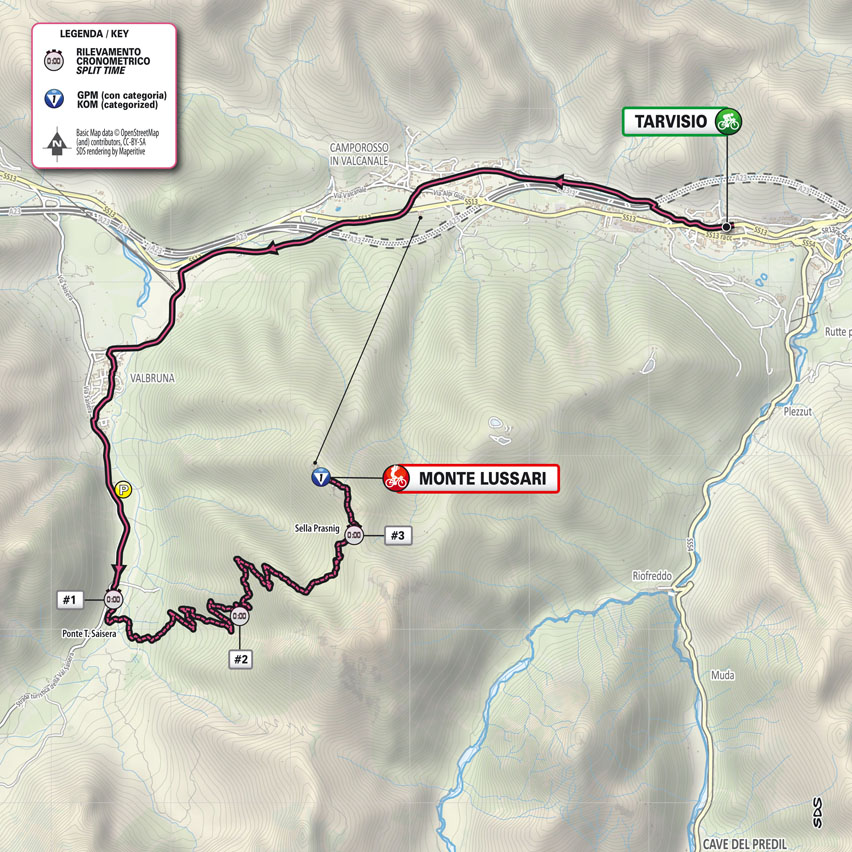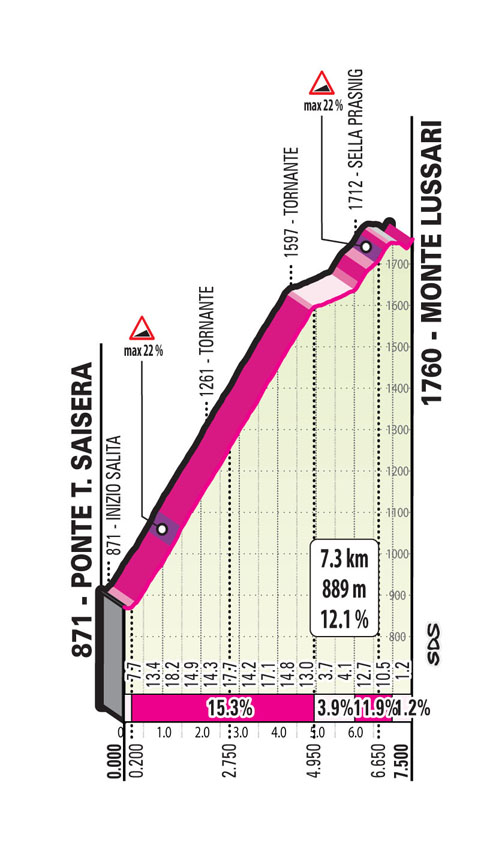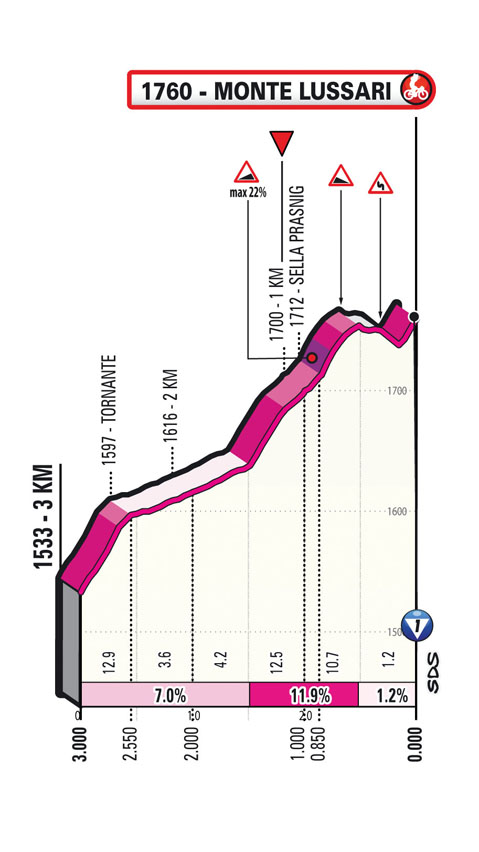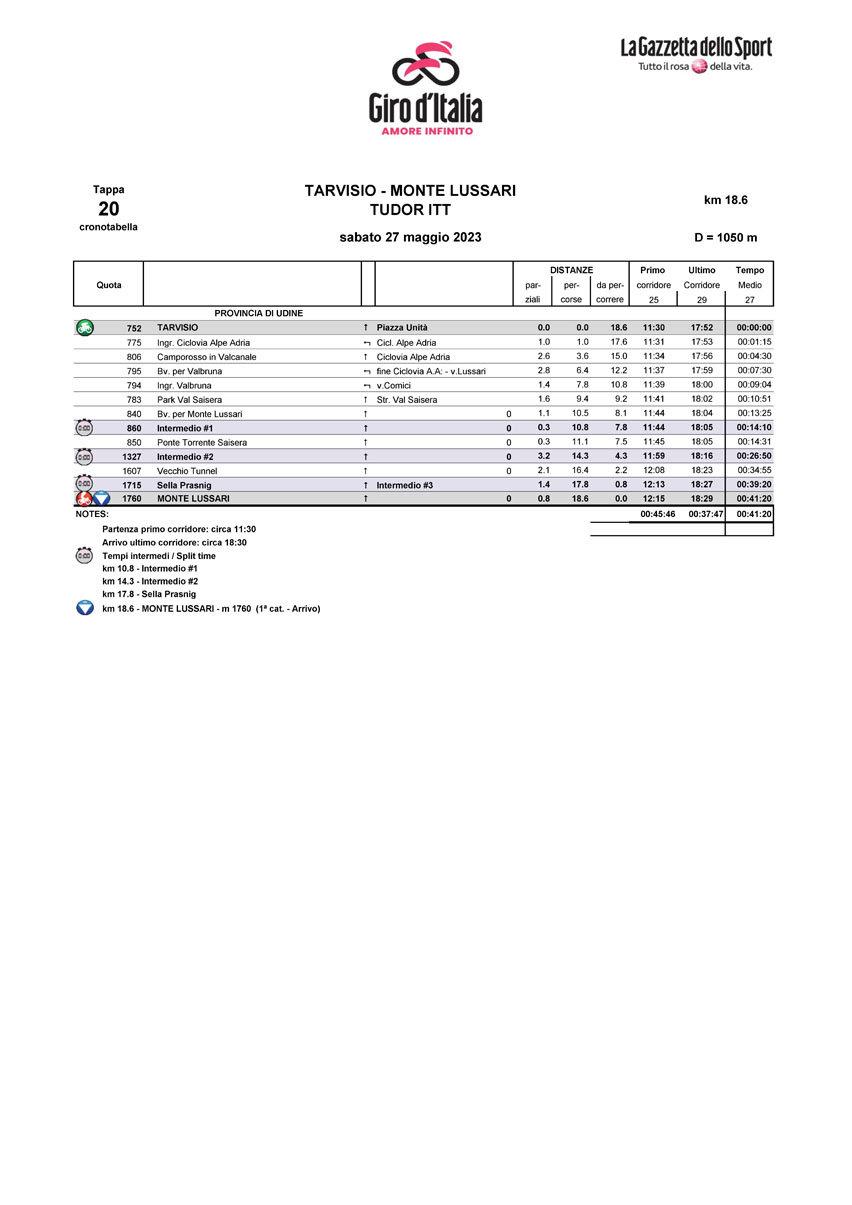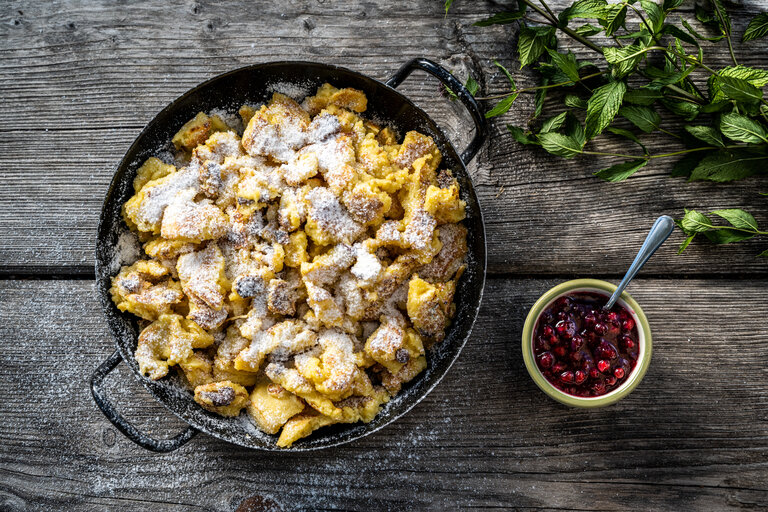profile
map
technical info
A challenging individual time trial. The stage begins with 11 km on flat or slightly uphill terrain (6 of which along the Alpe Adria cycle path), followed by the terribly steep ascent to the Monte Lussari sanctuary (7.5 km). There is a short kick up in the first section, with 15% max. gradients, when the route enters the cycle path. There is a zone for optional bike switch at km 9.4. The steep final part begins past the bridge over the Saisera stream.
Final kilometres
The closing climb snakes in hairpins through the woods, on narrow paved concrete. The first 5 km reach approximately 15% on average, peaking above 20%. Past the woods, the gradient falls to 4% for a short stretch. A short ramp in the final kilometre (with 20% gradients, up to 22%) is followed by a short descent (8%). After a double bend, the route rises at 16% for the last 150 metres, all the way to the finish (on 6 m wide concrete).
start / finish
climb detail
final kilometres
itinerary timetable
tourist info
Host city:
Tarvisio
Overview
Imagine a place where the seasons alternate slowly, where you can rest your mind and reconnect with nature. A place characterized by the spirit of brotherhood among peoples, where borders are freely crossed by walking or by riding a bike. It is an easy-to-reach place, located in the northeastern corner of Friuli Venezia Giulia, in Valcanale: here is Tarvisio!
A vast and multifaceted territory that stretches between the verdant Carnic Alps and the majestic Julian Alps, offering visitors nature, history, art, sports, food and wine, traditions and breathtaking landscapes. During the winter season you will encounter places to practice alpine skiing, Nordic skiing, ski touring, snowboarding, freeriding and even heli-skiing. You will also have the opportunity to go snowshoeing, ice-skating, mushing-sledding or fat-biking. In summer, on the other hand, you can go hiking, forest-bathing, dog-trekking, golfing, climbing, biking and mountain biking. Walking along the easy trails on the valley floor, immersed in the thousand-year-old forest of Tarvisio, or climbing higher up to the via ferratas, you will immerse yourself in unique environments, amid pristine alpine flora and fauna of rare beauty.
Food
GASTRONOMY WITHOUT BORDERS
The Valcanale – Canal del Ferro, whose historical events represent an extraordinary and fascinating baggage, have preserved, and in some cases reworked, traditions belonging to the Latin, German and Slavic ethnic groups not only in the cultural, economic and social spheres but also in the gastronomic sector. The centuries-old genuine encounter between the mountain culinary tradition, represented by Friulian-Carnian, Carinthian and Slovenian cuisine and the flavors of the Mediterranean, reveals its best fruits here.
The presence of unspoiled nature and an ancient forest, among the largest and most intact on the peninsula, have conditioned local food habits with the presence of game and mushrooms, berries and alpine cheeses. Alongside such typically Central European aspects, it is surprising to find, particularly in the Tarvisio area, fish and Mediterranean dishes as a result of the simultaneous substantial presence of many Italians of southern origin and the consequent important demand from the neighboring Austrians and Slovenes, who have always been lovers of Italian wines and dishes.
LOCAL SPECIALTIES
Don’t be surprised, there are many dishes that have extra-territorial significance, finding representation in the culinary traditions of Carinthia, Slovenia and Friuli. Goulash, frico, game ragout, barley dishes, minced lard, cured meats and cheeses that encapsulate the scents of the meadows and pastures of our mountains. And also strudel, plum-filled dumplings, Christmas cookies, reindling (in Austrian dialect) or schartl (in Slovenian dialect) and tarts with small fruits (raspberries, blueberries and blackberries). Carnic, Carinthian, and Mediterranean cuisine achieve balances and nuances in Valcanale, representing a hard-to-match choice of flavors and details. Traditions, therefore, are not mixed in an indecipherable offer, but are enhanced for each of their own characteristics.
LOCAL PRODUCTS
The local products of the Tarvisio area have intense flavors and genuine ingredients, among them are dairy products, mostly made from cow’s milk, eggs from free-range hens, organic dog, organic productions of fruit and vegetables, honey, preserves and jams, sausages and salami. Among all of them, the most renowned product is definitely Montasio, a large, cooked, semi-hard cow’s milk cheese, named after the mountainous massif in our wonderful Julian Alps.
Points of Interest
DISCOVER TARVISIO ON FOOT OR BY BICYCLE
The pristine Thousand-Year Forest of Tarvisio will surprise you with its 24,000 hectares, distinguished by a great variety of natural habitats, a sought-after flora with valuable endenisms, as well as a fauna including even the large European predators. Even the famous resonance spruce, from which important stringed musical instruments are made, lives among these forests in which valuable mushrooms also grow, a clear testament to the high naturalness of this area. Don’t miss the opportunity to visit one of the most fascinating places in the region: the Fusine Lakes, two emeralds set among the Julian Alps. The Conca di Fusine and its two lakes of glacial origin can be visited both in winter and summer, thanks to a loop trail that allows you to circumnavigate them both. But there is another lake about ten kilometers from Tarvisio that deserves to be seen: Lake Raibl or del Predil, which with its very clear blue-green waters reflects the peaks of the Cinque Punte (1919 m.). Among the most striking itineraries is also the Orrido dello Slizza walk, which, thanks to an easy nature trail, makes it possible to visit the spectacular “canyon” characterized by deep blue pools. Finally, a special mention must go to the Alpe Adria Cycle Route, whose section runs from Grado to Salzburg, which represents an exemplary case of reconversion of the old railway line route, which now makes it possible to comfortably cross the entire Valcanale valley by bike, but not only that, it is possible to reach neighboring Austria and Slovenia for a borderless ride.
DISCOVER THE HISTORY AND CULTURE OF TARVISIO
The Tarvisio area is a place rich in history and traditions, documented in the small museums and permanent exhibitions where you can indulge in cultural moments.
There are several historic buildings to turn your attention to as you walk through the streets of the town, such as the 16th-century Palazzo della Forestale, the Carinthian-style Spaliviero “palazzetto” and Casa Candoni formerly Villa Josefine dating back to the 19th century. You may also come across additional historical monuments such as the Holy trinity column, the Roman tombstone located behind the church, the portrait bust of Kajetan Schnablegger or, marrying from the center of Tarvisio you can visit the Habsburg soldier’s monument in Tarvisio Boscoverde, the Avilia Lada Stele in Camporosso, the Sella Predil battery in Cave, the Great War theme park with the heroes’ cemetery in Valbruna, and finally Fort Hensel in Malborghetto.
As far as museums are concerned, the main attractions are the Museo della Miniera e Parco Geominerario in Cave del Predil, which allows visitors to take a journey through the history and current affairs of mining by visiting the tunnels used until about 1990 for the extraction of lead and zinc, the Alpi Giulie Military History Museum located in Cave, which will allow visitors to retrace the history from the Napoleonic wars to World War II; the Antiquarium in Camporosso, in which Roman archaeological artifacts are preserved; and the Ethnographic Museum in Malborghetto, concerning rural and peasant life in the valley.
Among the sacred buildings not to be missed is the Sanctuary of the Madonna del Lussari, located on the summit of Mount Lussari, a renowned meeting place for peoples and pilgrimages from Carinthia, Slovenia and Friuli, which can be reached on foot via the Pellegrino Path, an evocative hiking trail that from the valley floor climbs the mountain through the thousand-year-old Forest of Tarvisio, or by cable car departing from Camporosso.
Also not to be missed are the parish church of Saints Peter and Paul, in Tarvisio, dating back to the 15th century, the church with Baroque elements of the Blessed Virgin of Loreto in Tarvisio Bassa, the church of Sant’Egidio in Camporosso (the oldest in the valley), the church of San Nicolò in Coccau, the 15th-century church in Fusine, and the church of Sant’Anna in Cave del Predil.
Do not miss the opportunity to participate in the important sports, cultural and artistic events that are organized every year and that will allow you to see the area from a different point of view.
Monte Lussari
Overview
A peak overlooking the land where the Carnic and Julian Alps come together, from a position of privilege that positions it as the guardian of these borderlands and the meeting place of Latin, Slavic, and Germanic peoples: Mount Lussari is much more than a peak that touches 1800 m! It is an exceptional terrace over the giants of the Julian Alps: from here, your eyes are lost in the majesty of the rock walls of Jof di Montasio, Jof Fuart, and Mangart from a viewpoint that is without a doubt privileged and unparalleled.
It is a renowned pilgrimage destination due to the presence of a sanctuary, which can be reached through the suggestive Sentiero del Pellegrino, a hiking path that from the valley floor climbs the slopes of the mountain along the millenary forest of Tarvisio.
Lussari is also the highest village in Friuli Venezia Giulia, and in its narrow streets, the traditional cuisine can be discovered in the dishes served in its many welcoming inns.












